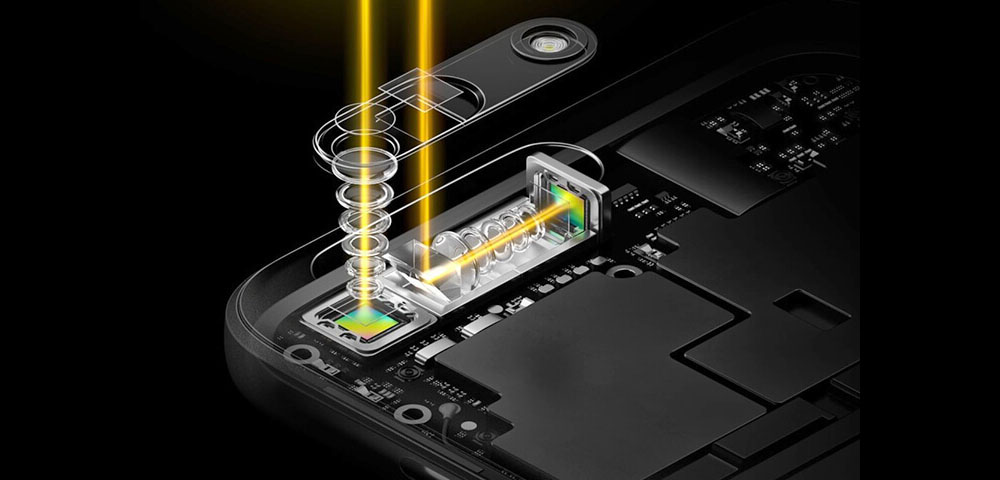Have you ever tried photographing the moon with a phone? Even when it is full and looks giant in the sky, it still appears in the shot as a diffuse point of light. But not on the screen of the Samsung Galaxy S21 Ultra in front of me: not only do we have a great view of the moon, we can also recognize lunar seas, such as the Sea of Rains and Sea of Serenity.

When you consider the poor quality of photos taken by mobile phones just 10 years ago, this zoom is impressive. However, the result is not perfect. The difference in quality compared to a camera with a large professional lens is still significant. We can see the moon on the screen, but it could be more intense.
Various software and hardware innovations are essential to be able to photograph an object from afar. On the software side, the phone knows, thanks to image recognition, that I’m shooting the moon, and adapts the camera settings (brightness, aperture, etc.) accordingly. It also instantly combines several snapshots into one, to save as much information as possible in the image. This is an example of computational photography, where algorithms play as important a role in capturing an image as the lens and sensor.
However, in this case, the device also has an opinion, since the Samsung Galaxy S21 Ultra has a periscope telephoto lens, a type of lens where the direction of light changes as it enters the phone, as in a periscope. Reflecting the light in this way makes it possible for the objective lenses to be spaced further apart, without proportionally increasing the thickness of the device. The result: the image captured by the camera with a periscope lens looks 10 times closer than a normal lens.

Samsung, whose Galaxy Note20 Ultra also has a periscope lens, but is less advanced, is not the only company offering this technology. Huawei also offers the P30 Pro and P40 Pro Android phones, as well as several Chinese manufacturers with a minimal presence in Canada, such as Xiaomi, Vivo, and Oppo. iPhones are not yet equipped with a periscope lens, but Trusted sources He estimated that Apple should start around 2022 or 2023.
What works well, what leaves something to be desired

After a few months of testing with the Galaxy S21 Ultra, it’s clear that the technology works well overall. Photos taken with a telephoto lens are consistently sharper than those taken with other phones with the same magnification.
This does not mean, however, that they are successful.
Large, well-lit objects are perhaps the ones that benefit most from approximation. Plane close enough to look good at 10x magnification. The same goes for urban landscapes when the subject is about ten meters away, for example.

However, photos taken with a telephoto lens are sensitive to lighting: once the subject is in the shadows, the quality drops dramatically. The phone software also seems to be having a hard time improving image quality with the usual adjustments. The main sensors of modern phones excel, for example, when one part of the image is well lit and another is less. With 10x zoom, this is no longer the case. The magic that computational photography algorithms used to do no longer work.
Note that the program allows you to increase the magnification more digitally, up to 100 times in the case of the Samsung phone. This is especially what is used to photograph the moon. However, the Moon is the only example I found where this magnification was worth a bit. Usually, the quality is not there.

The periscope lens is a great addition to a smartphone, which can sometimes take pictures that would have been impossible to take with a phone without this telephoto lens. This is exactly what happened to me at La Ronde amusement park. Long shots and photos taken with the Galaxy S21 Ultra and iPhone 12 Pro matched each other, but the pop-up telephoto lens gave unique shots, including people in the air.
However, the occasions when a telephoto lens is really useful in this way are clearly very rare. In everyday life, you can take dozens of shots without the telephoto lens producing anything really interesting. While waiting for that frequency to increase, which it will certainly happen over time, the technology should appeal to photographers and gadget enthusiasts, but it doesn’t impose itself as a buying criterion to consider for the average bear.

“Devoted gamer. Webaholic. Infuriatingly humble social media trailblazer. Lifelong internet expert.”





